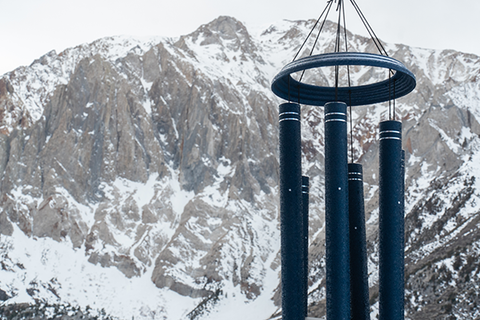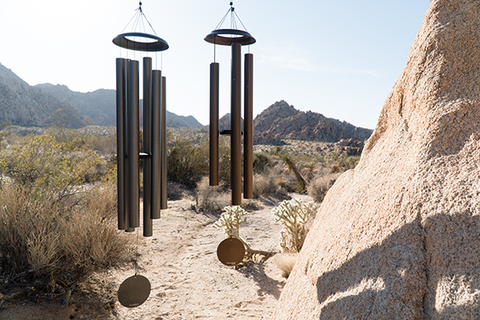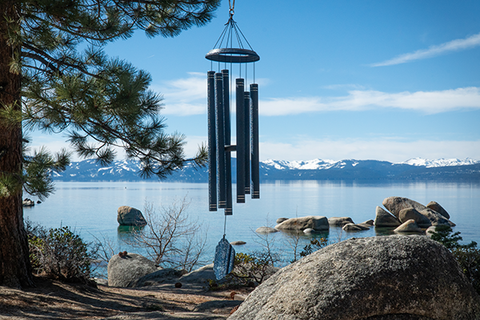
Introduction
The material of a wind chime plays a significant role in its sound, durability, and aesthetic appeal. Different materials create unique tones, from deep and resonant to light and sparkling. Whether you prefer meditative, calming chimes or bright, cheerful notes, choosing the right material ensures you get the perfect chime for your space.
In this guide, we’ll explore the best materials for wind chimes, their distinct sound qualities, and how to choose the right one for your home or garden.
Table of Contents
1. Aluminum: The Best for Long-Lasting, Resonant Tones
Aluminum is one of the most popular materials for wind chimes due to its exceptional resonance, durability, and weather resistance.
Sound Characteristics:
- Deep, rich, and resonant tones that sustain longer.
- Precision-tuned chimes, such as Wind River Chimes, use aluminum.
- Available in various tunings and musical scales.
Best For:
- Relaxing and calming spaces.
- Long-lasting outdoor durability.
- Musically-tuned chimes with harmonious melodies.
2. Bamboo & Wood: Natural, Earthy Sounds
Bamboo and wood wind chimes produce a soft, organic, percussive sound reminiscent of nature. They are ideal for creating a relaxing, Zen-like environment.
Sound Characteristics:
- Soft sounds that blend naturally with outdoor surroundings.
- Each bamboo chime is unique, offering slightly different resonance.
- Quieter than metal chimes, making them great for subtle background sound.
Best For:
- Zen gardens, meditation spaces, and tropical-themed decor.
- Low-wind areas where subtle, rhythmic sounds are preferred.
- Those who prefer softer, natural tones over musical tones.
3. Glass: Light, Sparkling, Decorative Chimes
Glass wind chimes are known for their delicate, sparkling sounds and artistic appeal. They are often used more for visual beauty than musical resonance.
Sound Characteristics:
- Light, twinkling tones that create a magical atmosphere.
- Sounds are high-pitched and more fragile than metal or wood.
- Decorative and often hand-painted or stained for added aesthetic value.
Best For:
- Decorative purposes rather than sustained musical tones.
- Coastal, beach, or artistic garden settings.
- Indoor spaces where airflow is gentle.
4. Ceramic & Shells: Soft, Artistic Sounds
Ceramic and seashell wind chimes are unique due to their decorative craftsmanship and soft, subtle sound.
Sound Characteristics:
- Light, clinking sounds that are more decorative than musical.
- Shell chimes evoke a beachy, coastal feel.
- Ceramic chimes can be hand-painted for added artistic beauty.
Best For:
- Artistic and decorative purposes.
- Soft, ambient background noise in calm settings.
- Coastal or bohemian-style homes and gardens.
5. Which Material is Best for You?
If you’re looking for…
- Deep, resonant, long-lasting musical tones: Choose aluminum or brass.
- Soft, natural sounds: Choose bamboo or wood.
- Sparkling, tinkling sound: Choose glass.
- Coastal or artistic decor: Choose ceramic or shells.
Frequently Asked Questions About Wind Chime Materials
Q: Which wind chime material lasts the longest?
Q: Are bamboo wind chimes weatherproof?
Q: Do different metals change the tone of a wind chime?
Conclusion
The best wind chime material depends on your sound preference, aesthetic style, and placement location. Whether you love the deep, resonant tones of aluminum or the gentle, organic rhythm of bamboo, there’s a perfect wind chime for every space.


